LHS
Ludwig Stern, a successful pipe manufacturer since 1893 and closing around 1960, reorganized his company along with his brother Hugo Stern, opening a factory in 1911. They named the company L&H Stern Smoking Pipes & Holders. The newly formed company was moved into a six story building on the corner of Pearl and Waters street Brooklyn, NY.
Notes from Geyer's Stationer
Thoroughly organized in all departments, and housed in a well-lighted and ventilated modern office and manufacturing building, the firm of L&H Stern Inc. is located near the first arch of the Manhattan bridge, near the river and convenient to the Brooklyn bridge, which makes it accessible from all the hotels in the metropolis for visiting buyers. The structure is six stories with a seventeen-foot basement, with light on three sides through prismatic glass windows, the first floor being seven feet above the sidewalk. Light enters the upper floors from all four sides.
L&H Stern is known to every important wholesaler and jobber in the country. LHS manufactures a complete line of briar pipes. Ginmetto wood pipes are also made, as well as Redmanol goods, the man-made amber. The first substitute for amber. Everything, even down to the sterling silver and other metal trimmings are made under one roof.
- Examples of pipes entirely made under roof
L&H Stern advertised pipes at prices starting from $1 and topping out at $25. One Advertisement said: "Remember, any LHS is the best pipe in its class".
- LHS is the best pipe in its class
The brand had 8 pipe grades listed in the 1944 issue of Outdoor Magazine.
- Sterncrest Ultrafine $10.00
- Sterncrest 14K $7.50
- Sterncrest Sterling $5.00
- Certified Purex $3.50
- Select Grain $2.50
- Silvercrest $2.00
- Superfine Purex $1.50
- Sculpted Purex $1.50
In addition to the above grades, a 1944 catalog also listed the following lines and models:
- Barrister
- Marwyn
- Park Lane
- Radmanol
- Warwick
Additional notes
Some models were made before, during, and after WWII. LHS was one of the main pipe supplier for US soldiers during WWII.
Pre-war pipes were stamped Real Briar Root, or Briar Root. Some war time pipes were made from domestic briar, or "American" briar and were void of any briar stampings. Many American pipe makers lost their over seas supply of Mediterranean briar shortly before and during the war. Post war pipes were stamped Imported Briar to assure customers that they were buying premium briar once again.
- Example of Pre war nomenclature, courtesy Dave Gossett
- War time Superfine, made from domestic briar (likely Mission Briar, made from Manzanita burl). Simply stamped LHS Superfine, and void of any briar stamp or metal fittings, courtesy Dave Gossett
- Post war Superfine and nomenclature, courtesy Dave Gossett
- Purex Superfine example and nomenclature, courtesy Tim Lomprey
- Purex Diamonds Imported Briar, courtesy Doug Valitchka
Many of their later Sterncrest pipes featured silver bands and some were made with 14kt. gold bands as well.
- LHS Purex Seasoned Briar example, courtesy Gerald Young
- LHS Sterncrest examples with details and nomenclature, courtesy Doug Valitchka

- LHS-Sterncraft 1954 Yale University Class Pipe. See College Class Pipes for more information. Courtesy Brian Robertson collection.
- LHS Superfine examples and details, courtesy Doug Valitchka
- LHS Park Lane example and details, courtesy Doug Valitchka
- Various LHS examples and details, courtesy Doug Valitchka
- Pipes examples and details, courtesy Dave Gossett collection
- LHS Certified Purex #96, courtesy Dave Gossett collection
- LHS Purex Preferred Imported Briar #99, courtesy Dave Gossett collection
- Promo photos from a vintage stereo-scopic slide reel that appear to be from the L&H Stern factory lobby, courtesy Dave Gossett
- Promo photos of various displays, including the Special Make, the highest grade LHS. Extremely large sized and costing as much as $25 in the 1940's. Courtesy Dave Gossett
Sources
- Tobacco: An illustrated weekly journal
- Geyer's Stations
- The Rotarian
Catalog
- Thanks to Mike Starke for this copy of the 1946 LHS Catalog
Budget Pipes Apparently Made by LHS
- Leader
- New Art
- Catalog Pages of various display boards of budget pipes, courtesy Doug Valitchka
Patents
Many thanks to Dave Gossett for his assistance with this article. Dave has an extensive collection of L&H Stern pipes and related tobacciana, and has done extensive research on the firm.






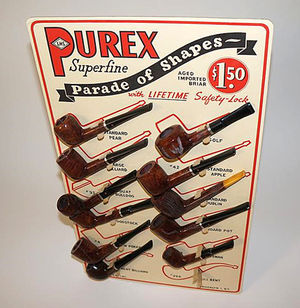
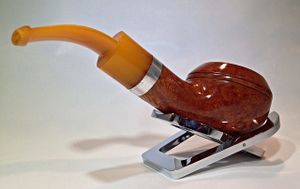




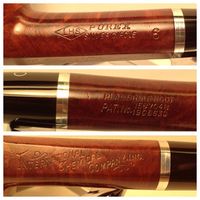






























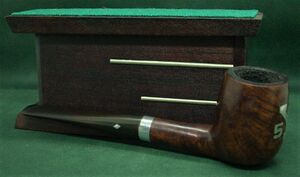








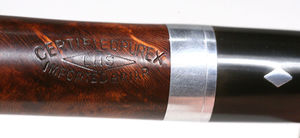





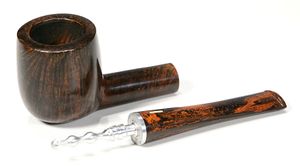















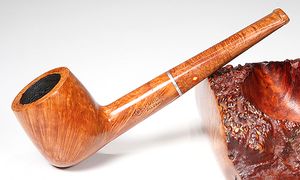









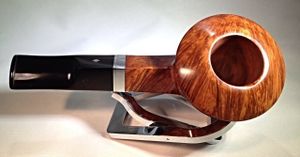







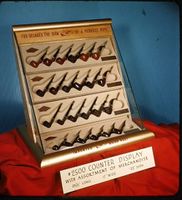

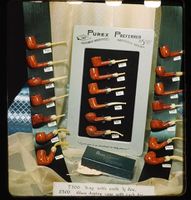


![1928 Patent[1], courtesy Doug Valitchka](/images/thumb/b/b0/LH_Stern_1928_1587048.jpg/440px-LH_Stern_1928_1587048.jpg)
![1933 Patent[2], courtesy Doug Valithka](/images/thumb/0/05/LHS1933Patent.jpg/450px-LHS1933Patent.jpg)